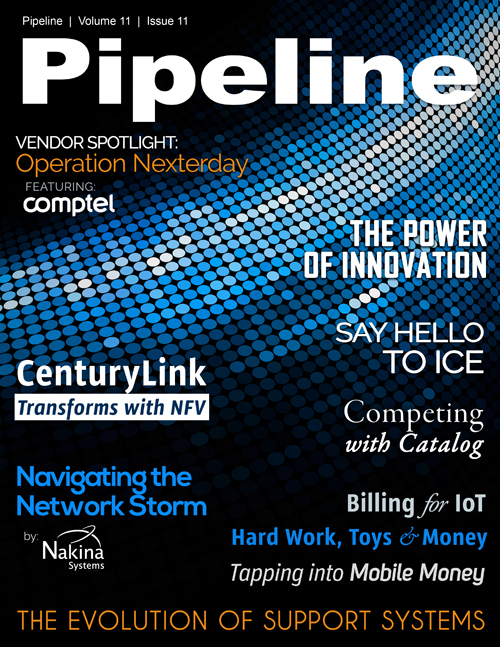Goodbye B/OSS, Hello ICE
By: Jesse Cryderman

Believe it or not, the smartphone revolution is only eight years old. It kicked off in 2007 with Apple’s prescient slogan, “This is only the beginning,” and the release of the first iPhone, which pulled smartphones as a whole out of the geek toy box and into the realm of mass-market acceptance. The world was changed as a result.
Smartphones, and later tablets, combined the power of a PC with mobile connectivity, creating an always-connected society with an ever-increasing appetite for data, media and social interaction. Voice telephony, the traditional service provided by the phone company, quickly took a back seat to mobile data (and all the management headaches that come with it). These changes happened so fast that operations support systems (OSS) and business support systems (BSS), the traditional enablement mechanisms used by communications service providers, now needed to transform to meet CSPs’ dynamic, growing needs and the advent and evolution of new services and applications.The model has been substantially revised and solutions extended, but the old technology boxes just don’t fit anymore, forcing new categories to be created. While OSS and BSS still have a significant role to play in the front and back offices as well as on the network, a different breed of communications technology is required to contend with and integrate new and vitualized networks, mountains of data, every growing traffic, expanding services and applications; all of which which are at the forefront of today’s communications and entertainment industry. Enter Integrated Communications and Entertainment, or ICE, technology- the next generation of technology designed to help CSPs capitalize on these emerging opportunities that are transforming their business.
The playing field has changed
The modern telecommunications service landscape offers many examples of how and why the terms OSS and BSS are reaching their expiration date. In a nutshell, the landscape that traditional OSS and BSS were created to serve has primarily switched from voice telephony to a digital-services economy that happens to include voice but also features other billable services and innumerable service permutations. During this transition everything has become more complex: from devices, product bundles, varying access technologies, and new competition; to the very types of organizations themselves. Today Microsoft has been deemed a service provider while a company like BT or Verizon has also become an over-the-top (OTT) player, while the fact of the matter is both labels are essentially true.
The tectonic plates of telecommunications shifted dramatically when it moved from just POTS, or plain old telephone service, to wireless around 1995, and since then it’s exploded to include tablets, machine-to-machine (M2M) devices, and the Internet of Things (IoT). The sheer number of devices under management has spiked, and will further ramp-up as M2M technology continues to proliferate. Even the communications capabilities of the devices have changed—what was once just wireless voice now includes applications and file and data sharing via Bluetooth, Wi-Fi and near-field communication (NFC) between M2M devices like healthcare sensors, smart posters, wristwatch displays, and much more—and will continue to change. Meanwhile, CSPs like AT&T and Verizon have moved into terrestrial video and broadband service to offer triple- and quad-play bundles, which utilize set-top boxes and in-home routers.




















